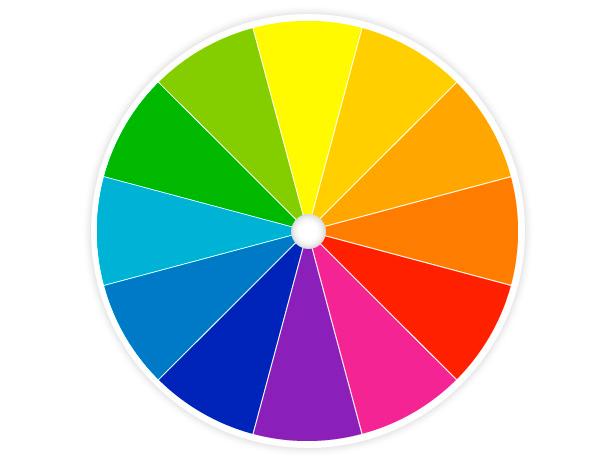Last week we talked about stashbusting using stripes, colourblocks and contrasting edges. But how do you decide what colours to use together?
One useful tool is a colour wheel like the one pictured below.
This colour wheel is a standard version with twelve segments. It is made up of the primary colours yellow, red and blue (at 12, 4 and 8 o’clock) and secondary colours orange, purple and green (2, 6 and 10 0’clock). Secondary colours are created by mixing two primary colours, for example red and yellow give orange, so they sit half way between the primary colours on the wheel.
The other colours here are known as tertiary colours and are made by mixing a primary and a secondary colour. So for example at 9 o’clock the blue and green are mixed to give a greeny-blue or turquoise shade. You could go on adding segments by mixing each colour with the one next to it to create a larger range of shades but twelve is enough for now.
Using colours together
There are various ways to combine colours and if you are choosing from stash yarns it can be useful to set them out as if round a colour wheel.
If you want to work with colours of a similar shades, choose yarns that sit in the same quarter of wheel. So purples and blues for example. These are known as analogous colours.
On the other hand, if you want more of a contrast use complimentary colours. These are the colours that sit opposite each other on the wheel – yellow and purple, green and red etc. These are good choices if you want a strong contrast such as on the heel of a sock. If you want a subtler contrast choose a colour to the immediate left of right of the one opposite. For our yellow this would be pink or a purply-blue.
If you are looking for a group of colours to work together pick three or four colours evenly round the wheel, for example at 1, 5 and 9 o’clock or 1, 4, 7 and 10 o’clock. When working with groups of colours like this, choose one to be dominant and use the others as contrasting options.



I thought this article was very helpful for me to decide which color combinations I should choose for projects!
LikeLike